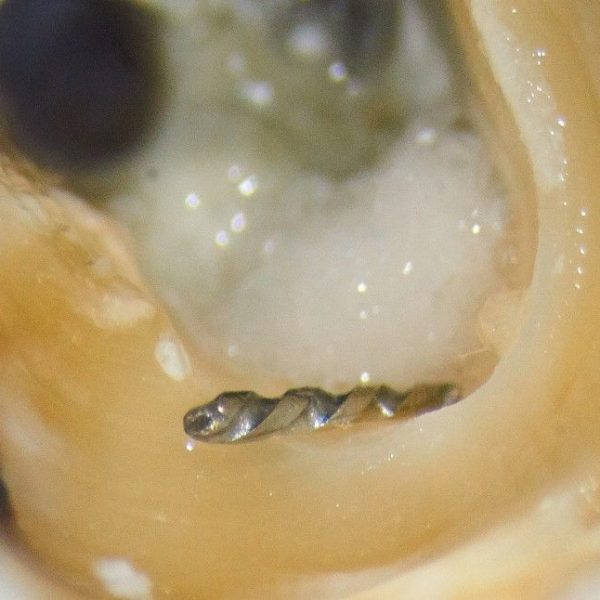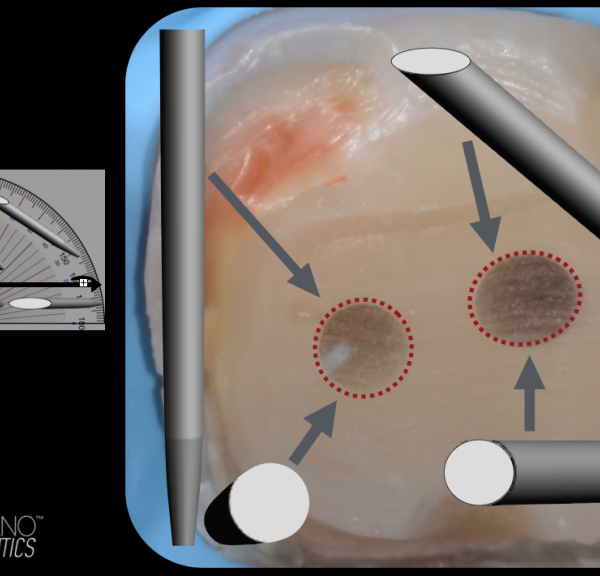
Practical tips in ledge management
19/05/2017
Grzegorz Witkowski
Warning: Undefined variable $post in /var/www/vhosts/styleitaliano-endodontics.org/endodontics.styleitaliano.org/wp-content/plugins/oxygen/component-framework/components/classes/code-block.class.php(133) : eval()'d code on line 2
Warning: Attempt to read property "ID" on null in /var/www/vhosts/styleitaliano-endodontics.org/endodontics.styleitaliano.org/wp-content/plugins/oxygen/component-framework/components/classes/code-block.class.php(133) : eval()'d code on line 2
Endodontics is nowadays becoming more and more user-friendly with modern rotary or reciprocating files; however despite introducing new products, protocols are still prone to failure. One of the most common problems in endodontics is the formation of a ledge. This deviation from the original canal can be fatal for a tooth.
Managing a ledge can be a real challenge. Ledges lead to mistreatment and poor outcome. Main causes for ledges are improper instrumentation of a canal, pushing instruments or failing to use instruments in sequential order. When scouting a canal, one has to be very tactile and try not to push instruments. Sometimes its also connected with improper access.
First important issue is to understand how is it developed in a canal.
All NiTi instruments have two features, one bad and one good. Both are called "shape memory". On one hand it's good that files are flexible and adopt to the curvature of a canal. On the other hand, the problem occurs when we stop on the curvature with a rotating file. It’s proceeding while cutting on the outer part of a curvature. Time needed to develop a ledge depends on the construction of a file (more agressive file means faster ledge). It happens because the file wants to come back to its programmed shape (straight). Ledges can also be done with too rigid, fast or aggressive hand file introduction in the canals.
Knowing that issue can help us prevent from doing ledges, but sometimes it happens. So what to do in that situation. In order to pass a ledge, one have to pre-bend a file in a special way. Not as most of us do it. One has to use the advantages of a canal anatomy. What is good is that it's impossible to do a ledge on the inner curvature and this would help us pass a ledge more easily and more predictably. Ledges always occur on the outer curvature.
Mostly inner curvatures don't have any obstructions. Knowing that, we can use it to guide a steel hand file to pass a ledge very efficiently. First, what one has to do is to pre-bend a file in a fishing hook style. Then next step will be to advance it in the canal in a way that a tip of a file always goes toward the inner curvature.
First after recognizing a ledge, before introduction of any file, we need to rinse very efficiently. This is very important as the debris probably influenced the natural canal and clogging can occur. Ultrasonic activation would be very good. There are a lot of devices to use, e.g. Vista Dental has a special tool for activation and continuous irrigation. After this step we can proceed to step two.
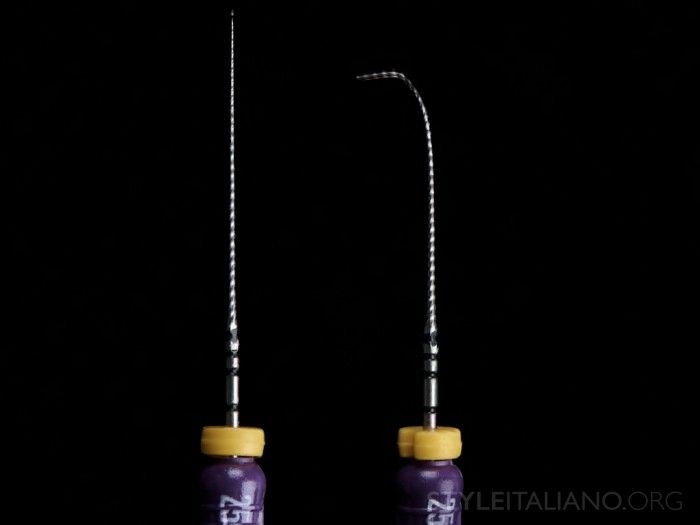
Fig. 1
With a winding motion, push the steel handfile iso 10 (pre-bended in a fishing hook style) little towards the apical zone.
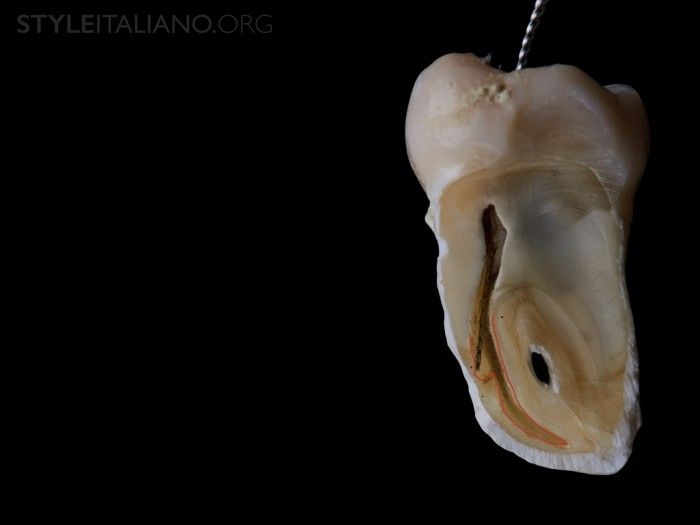
Fig. 2
This will allow us to pass a ledge. Then prepare a ledge with following hand files till size 20, also pre-curved in that particular way.

Fig. 3
The outer curvature of a file will cut and flatten a ledge and provide a proper glide path for a rotary instrumentation.
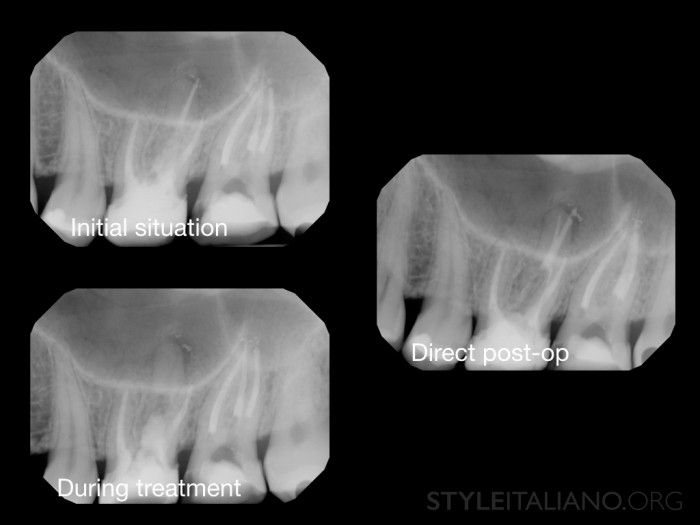
Fig. 4
Passing that step one can proceed with a mechanical instrumentation. Still, never push a rotary file in this situation as it should advance in a canal by itself. If ok you can finish, your preparation with a rotary, if not finish with hand files.
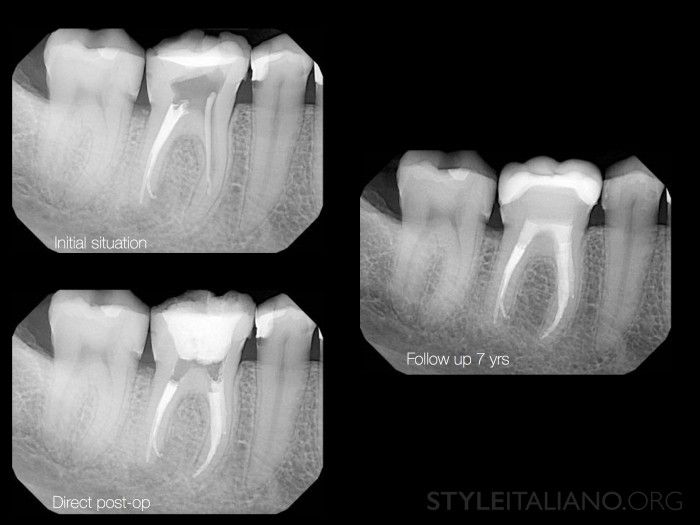
Fig. 5
Conclusions
There are a lot of techniques to pass a ledge in a canal. The main thing is to find a solution which is teachable, feasible and repeatable.
Bibliography
JOE Volume 33, Number 10, October 2007
Ledge Formation: Review of a Great Challenge in Endodontics
Hamid Jafarzadeh, DDS, MSc,* and Paul V. Abbott, BDSc, MDS, FRACDS (Endo)
Shaping Ability of Reciproc, WaveOne GOLD, and HyFlex EDM Single-file Systems in Simulated S-shaped Canals.J Endod. 2017 Mar 11.
Özyürek T1, Y?lmaz K2, Uslu G2.
J Conserv Dent. 2010 Jan;13(1):16-22. doi: 10.4103/0972-0707.62636.
CT evaluation of canal preparation using rotary and hand NI-TI instruments: An in vitro study.
Nagaraja S1, Sreenivasa Murthy BV.
Iran Endod J. 2008 Summer;3(3):73-8. Epub 2008 Jul 10.
Technical quality of root canal treatment performed by undergraduate dental students.
Dadresanfar B1, Mohammadzadeh Akhlaghi N, Vatanpour M, Atef Yekta H, Baradaran Mohajeri L.


